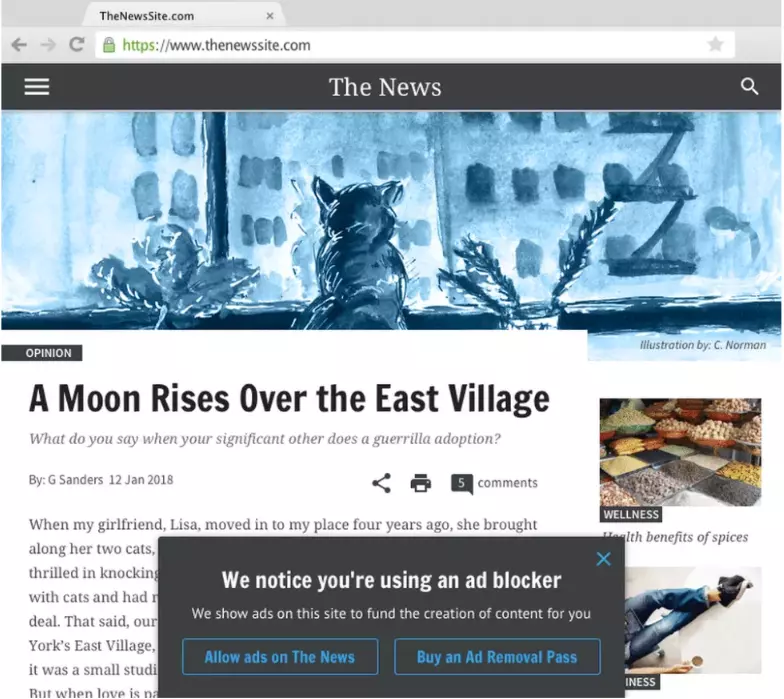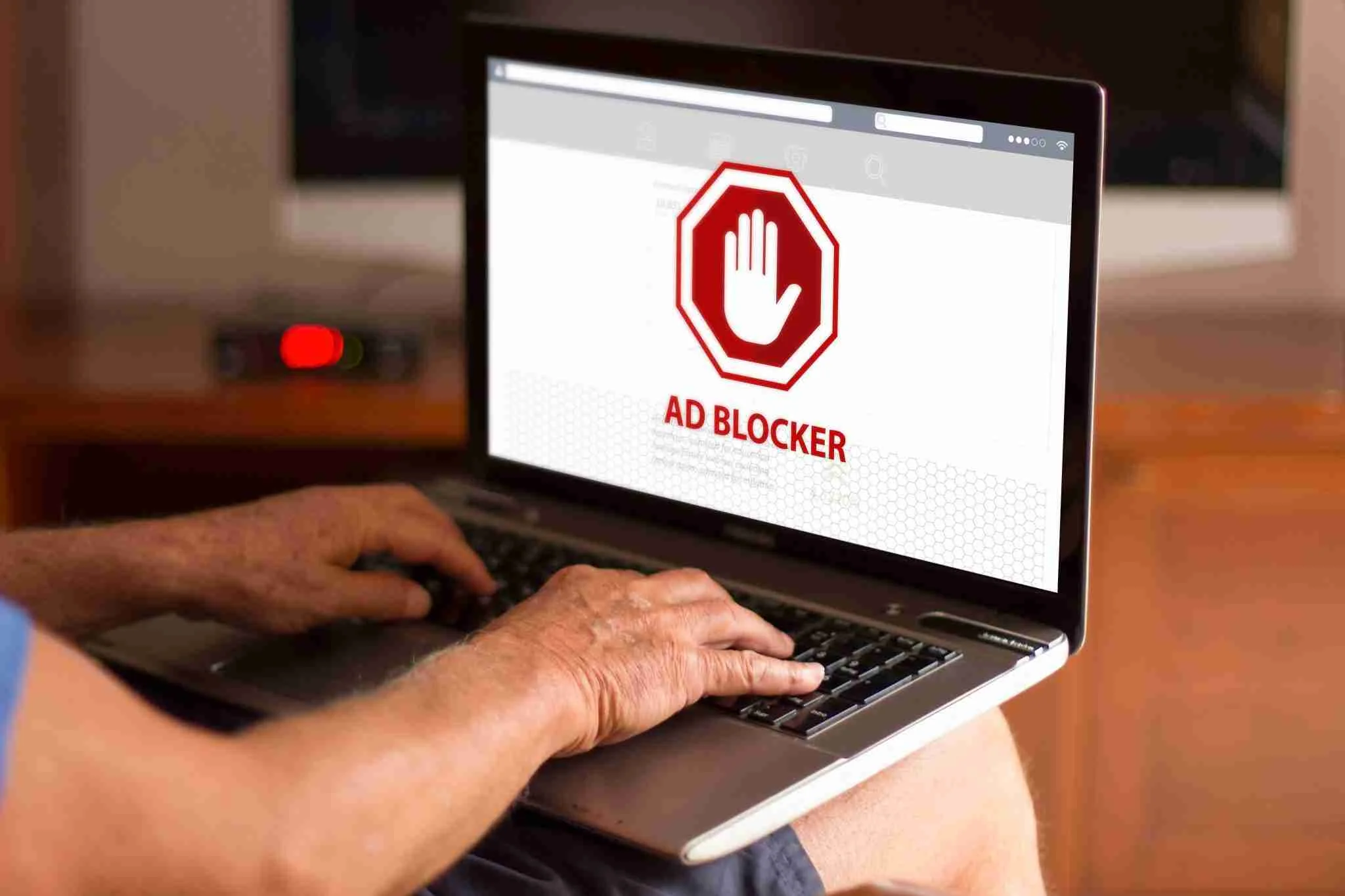According to GWI data, 32.8% of people use ad blockers globally!
Undoubtedly, ad blocker extensions/apps are a looming threat to digital publishers of all shapes, sizes, and niches. With constant pressure from the buy-side to better target users, publishers battle with ad blockers to stay alive in the industry.
Dealing with ad blockers is easier said than done.
In this post, we have listed reliable approaches that will help you bypass ad blockers. These strategies are chosen based on the real-time concerns that drive users to adopt ad blockers.
Before diving straight into anti-ad blocker strategies, here’s a quick refresher.
Table of Contents
What Is an Ad Blocker?
An ad blocker is a program or software designed to prevent ads from appearing on a web page. In other words, it assists in removing any type of ad content on websites.
Mostly, they are easy-to-install plugins or browser extensions that work automatically and start blocking ads when the user completes the installation.
How Does Ad Blocker Work?
Typically, digital advertising comprises demand-side platforms (DSPs), supply-side platforms (SSPs), ad exchanges, ad networks, etc., which communicate with the publisher to serve personalized ads. They do so using ad tags and scripts.
At the webpage loading event, the ad blocker script checks the website’s script and compares it with the list of websites or scripts that are supposed to be blocked. If the script finds anything matching the filter list*, it blocks it.
*Filter list comprises the ad-related calls to known ad networks or other platforms. Ad blockers use this to match the ad calls in the network and prevent them.
An ad blocker blocks all types of ads, such as pop-up ads, display ads, native ads, video ads, embedded texts, etc. It tracks all HTTP requests going in and out of a website to ensure user privacy.
Ad blocker plugins or extensions are not only limited to desktops but are also compatible with mobile and tablet devices. Hence, as a publisher, you need to implement strategies and optimization that work across devices.
At the same time, you should provide value to your users by providing good content and preventing poor user experience.
Ad blocker Usage in 2024
Eyeo and Blockthrough’s blocking rate report predicted a higher rate of ad blocker adoption in 2024.
The active ad block user rate increased by 11% from Q1 2023 to Q4 2023. If this situation persists, global ad blocking will cost publishers $54 billion with ad filtering and $116 billion without ad filtering* in 2024.
*Ad filtering refers to a process in which ad blockers block only intrusive ads, not all.
So, preparing your site with competent ad-blocking strategies to combat ad blocker challenges is indeed.
How Do You Identify If Website Visitors Have Installed Ad Blockers?
Since more and more people use ad-block software on their browsers, knowing how many site visitors use such software is becoming increasingly important so you can adapt accordingly.
Here’s our step-by-step tutorial on how to track ad-blocked users with the help of Google Analytics.
How Can a Publisher Monetize Ad Blockers?
We need to realize that when users are welcomed by too many ads (pop-ups, intrusive ads), they decide to look for a solution. The easiest one is an ad blocker.
Hence, ad cluttering is the top reason users choose ad blockers. Other reasons include privacy protection, irrelevant ads, annoying ad formats, etc.

Source: Global State of Digital 2022
Therefore, it is essential to choose strategies that stop the causes driving ad blocker adoption. Here, we have listed a few on that subject.
Relevant ads
According to the Tinuiti survey, 82% of U.S. users are fine with seeing ads rather than paying money to access the content. On one condition, if the ad is relevant to them.
Consumers wish to see relevant and engaging ads. They also allow data collection if it means getting a better online experience. They expect marketers to use their data responsibly according to consumer terms.
So, find ways to personalize ads for users. These ads will not highly likely be blocked if users are using ad blockers that filter ads.
Improve user experience:
Sounds usual, isn’t it?
But, user experience doesn’t end with fast page loads and relevant content. It means analyzing how users interact with your content (including ads) and why they leave.
To get more insights, you can break down the numbers from ad requests, timeout settings, etc. For instance, when you deploy header bidding, it is essential to set an optimal timeout to ensure a seamless user experience.
The same goes for ad placement, ad refresh, ad format, and ad layout.
Consumers are more likely to prefer an ad-light experience without the annoying ads. They also prefer ads that give them control, such as rewarded video ads.
Deploy paywalls:
One of the stronger and more straightforward steps for any publisher is to set up a paywall/ ad block wall. Determining which user has installed an ad blocker with JavaScript is possible.
Instead of pleading with the user to unblock, the deployed paywalls/ ad block walls either ask to whitelist the publisher site to access the content or ask for a premium amount to view the content.

It works well for premium and mid-market publishers. In addition, if your content is highly exclusive, regardless of the market share, you can reap great benefits from this strategy.
Try the proven strategies to overcome the Ad-block issue.
Requesting users to whitelist:
You can use short messages that convince users to whitelist your website so that the ad blocker won’t affect the ads shown in any way.
There are two ways to do this:
- You can offer a certain number of free articles (Like Medium, Wired, etc.) weekly or monthly and ask the user to whitelist for more.
- You are subtly showing the message with the reason behind the ads. For instance, The Guardian requests users to contribute at the end of every blog post; you can use the same to request whitelisting.
Adaptive advertising or running native ads:
Since native ads go well with the content and blend well, they’ll assist you in bypassing the ad blocker. Native ads are well known for improving user experience and profitable than banner and display ads. Hence, they are sure to be tried.
The easy way is for publishers to calculate the cost lost by ad blockers and try to revive the loss by displaying the native ad content.
Ask for an email address
If a user leaves the website after being asked to turn off their ad blocker or subscribe, ask for their email ID to receive free newsletters.
The newsletter subscription model leaves publishers with more revenue streams than ads. They can target ads through email marketing, sponsorship content, etc.
Washington Post uses this method to provide users with an ad-free experience while improving their revenue with a high customer retention rate.
Are you looking for more strategies? Here’s another guide on how to recover revenue from ad blockers.
Connect with the right partner
Dealing with ad blockers requires extensive work, from finding the cause and choosing the strategy to implementing the solution.
There are many constraints and exceptions in moving this journey to fight ad blockers and gain back your revenue. It might be hard to deal with them without a deeper knowledge. The solution is to hire the right programmatic monetization partner.
If you want to hire a trusted one, let’s chat. We will connect you with the one who provides personalized solutions and boosts your revenue potential.
Ad Blocking on Chrome With its Built-in Ad Blocker
Google Chrome has a built-in ad blocker that automatically blocks ads if they do not adhere to Coalitions for Better Ads. The one good thing about Chrome’s ad blocker is that it does not block all the ads but only the bad ads that forcefully remain on the website and affect UX with increased loading time.
So, the publishers must put ads that comply with the Coalition for Better Ads. Google allows publishers to check the problems in their website and if their ads adhere to better ad standards with an ad experience report tool.
You can learn more about it on How Google Chrome’s Built-in AdBlocker Impacts on the Digital Ecosystem.
What’s Next?
The ad-blocking issue can’t be solved with just a step. You might need to experiment with the abovementioned strategies to get the desired results.
Removing 100% of the blockers is not just hard; it’s quite impossible. As a publisher, you must ensure you have done whatever you could to maintain a good user experience and boost ad revenue.























